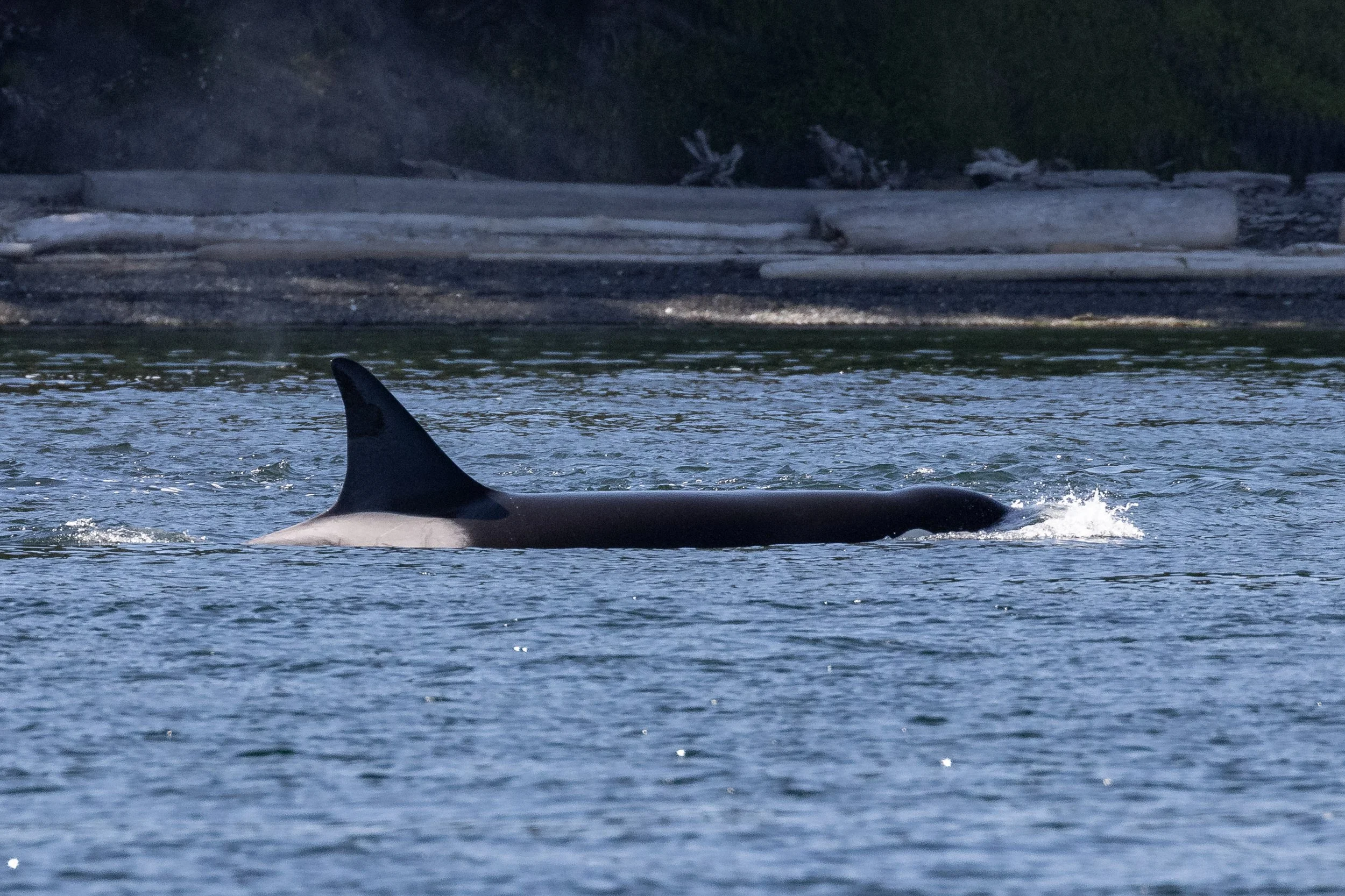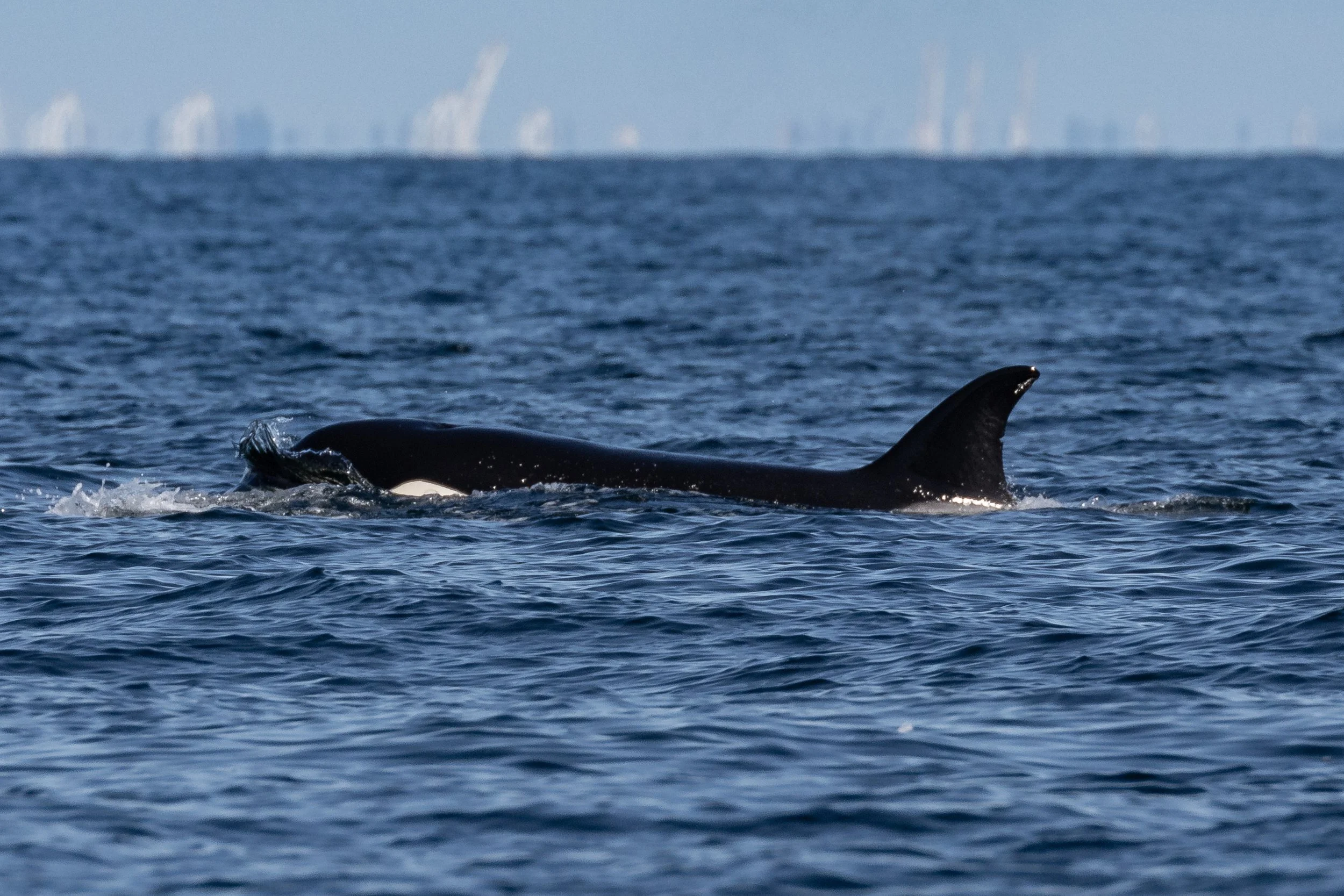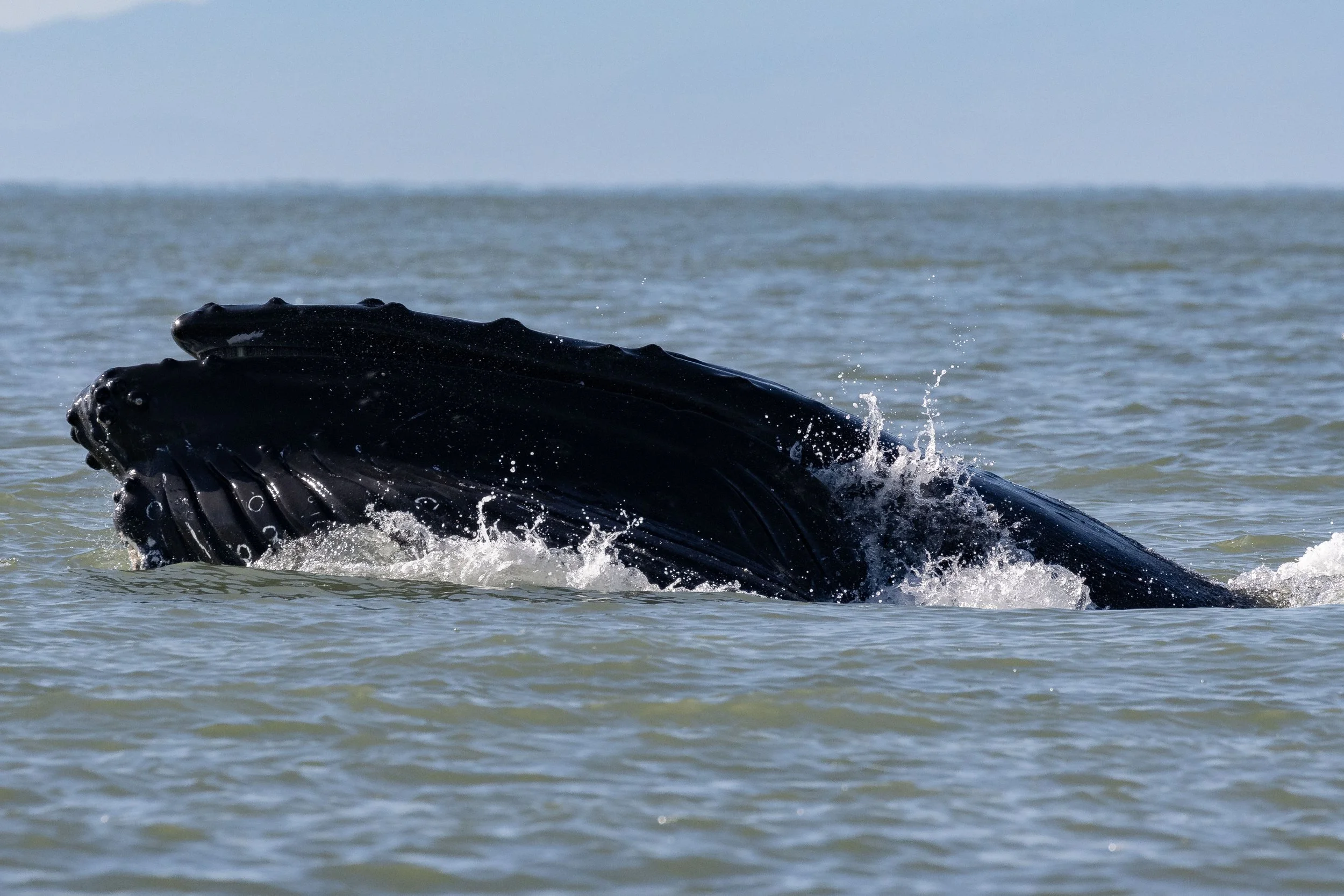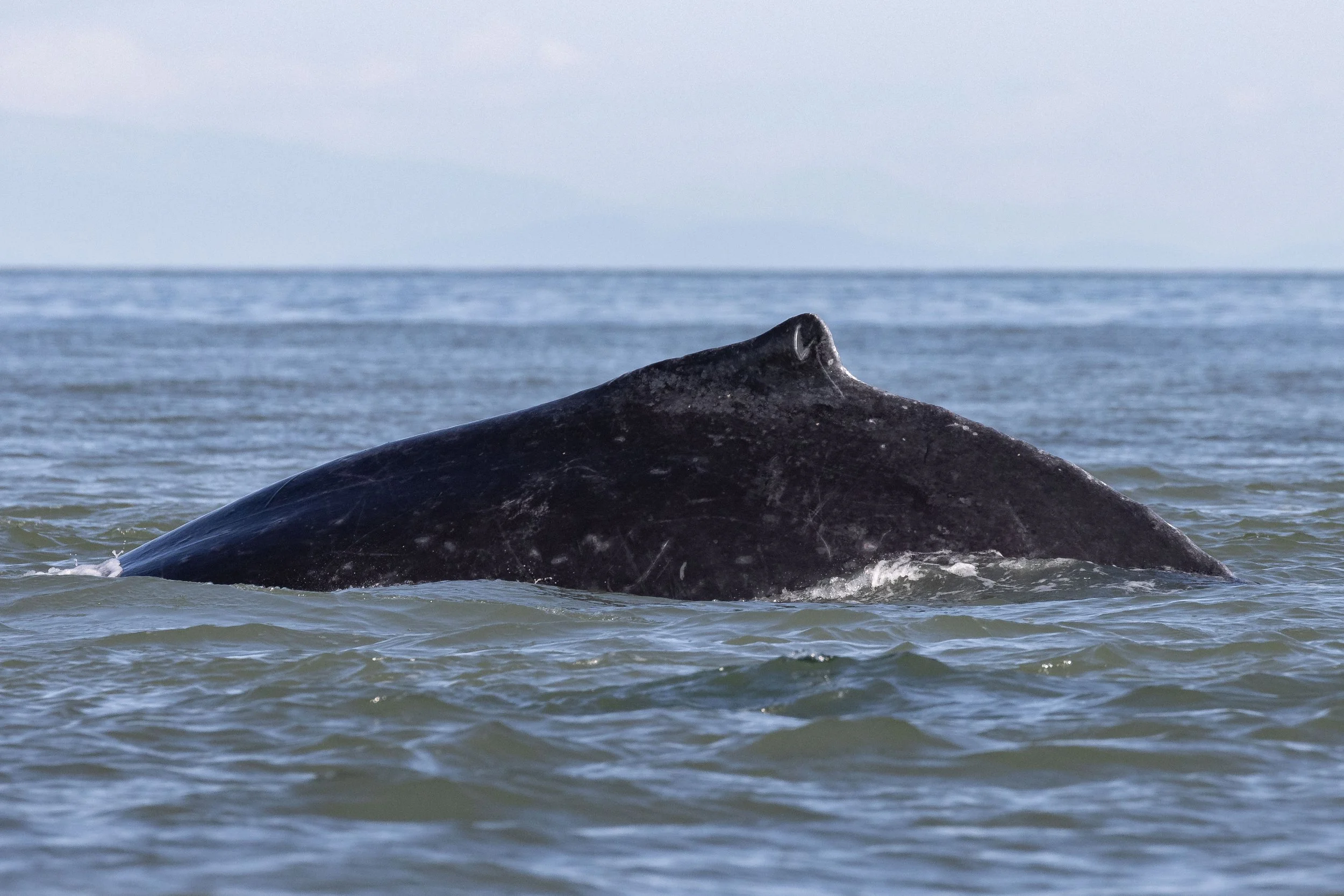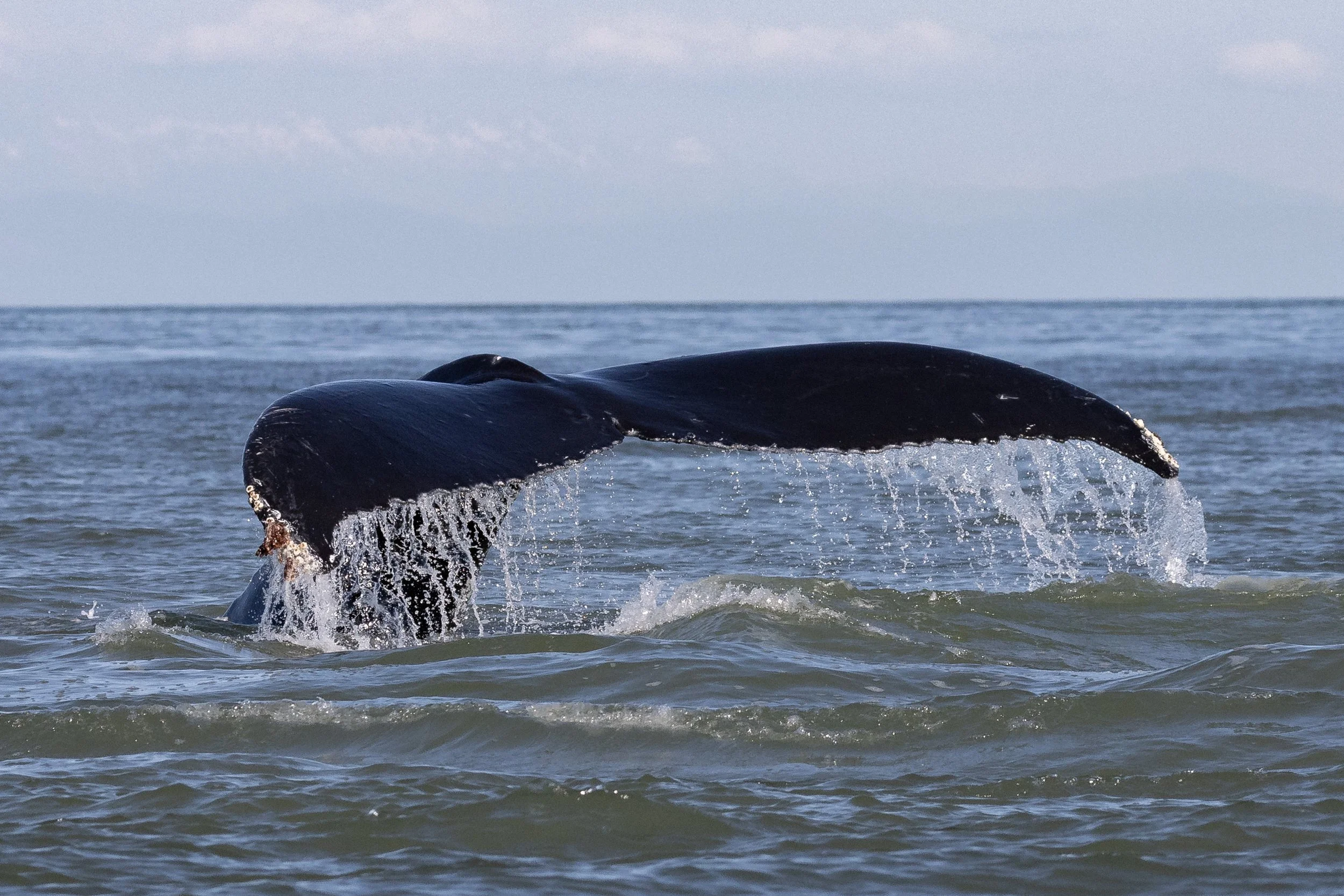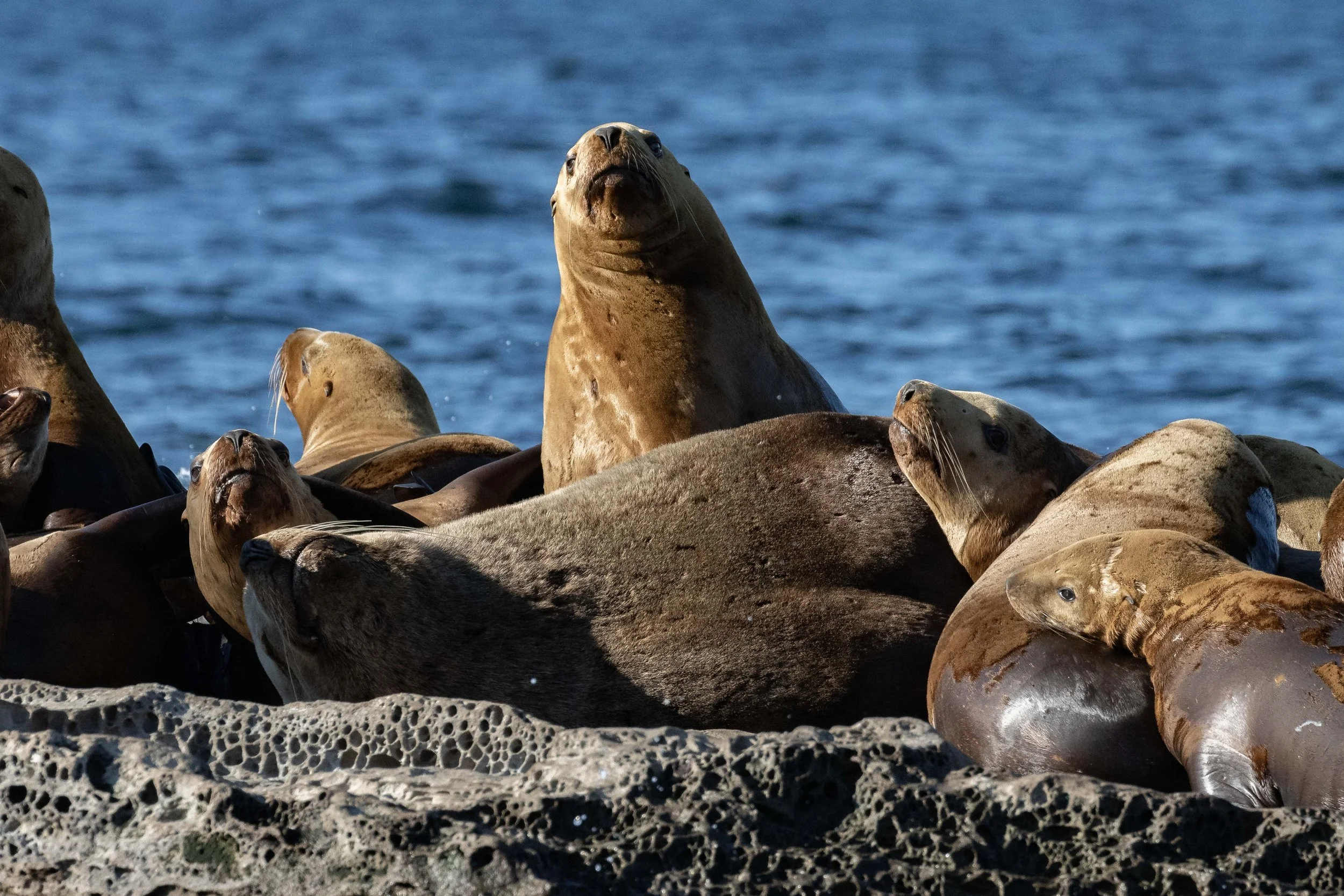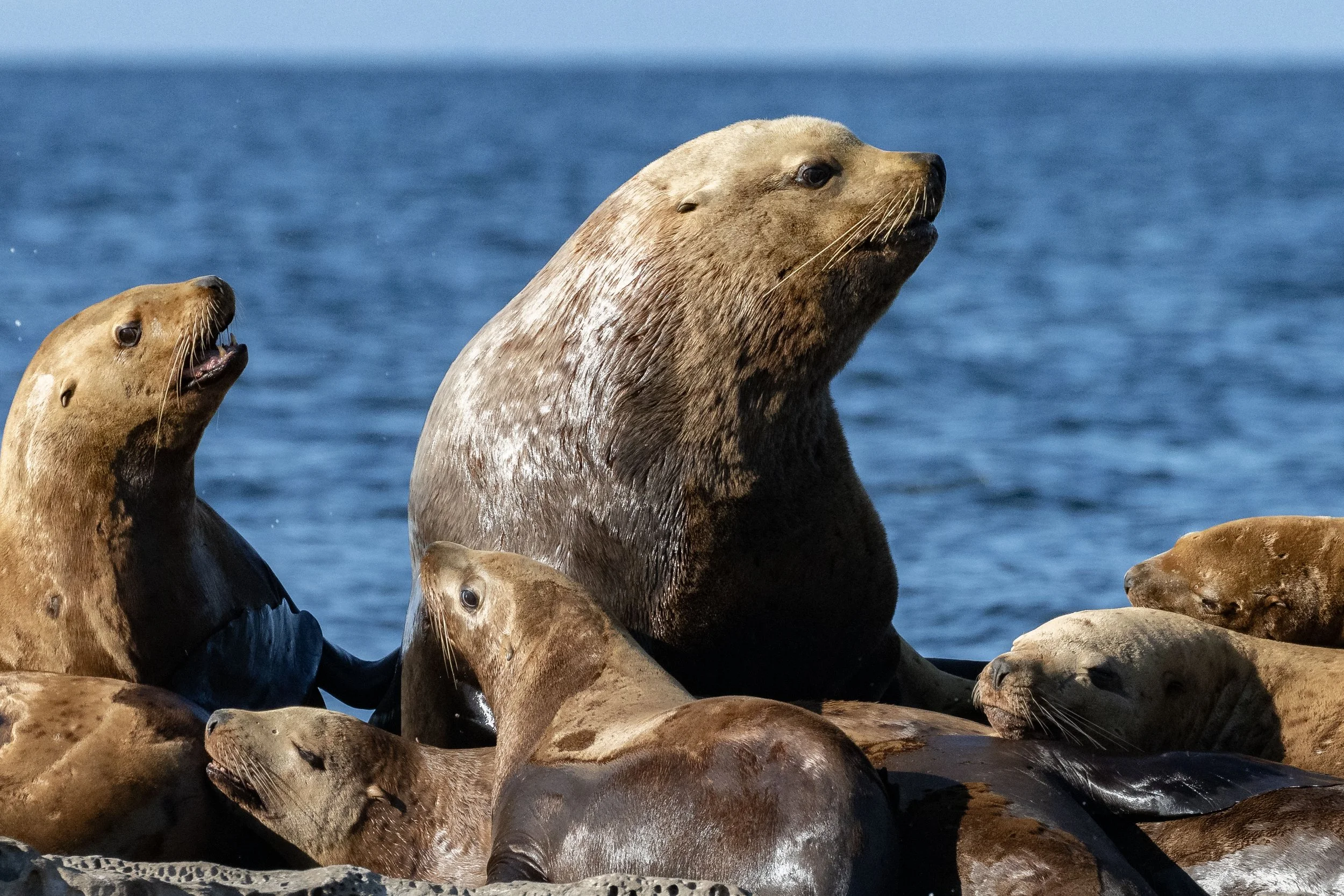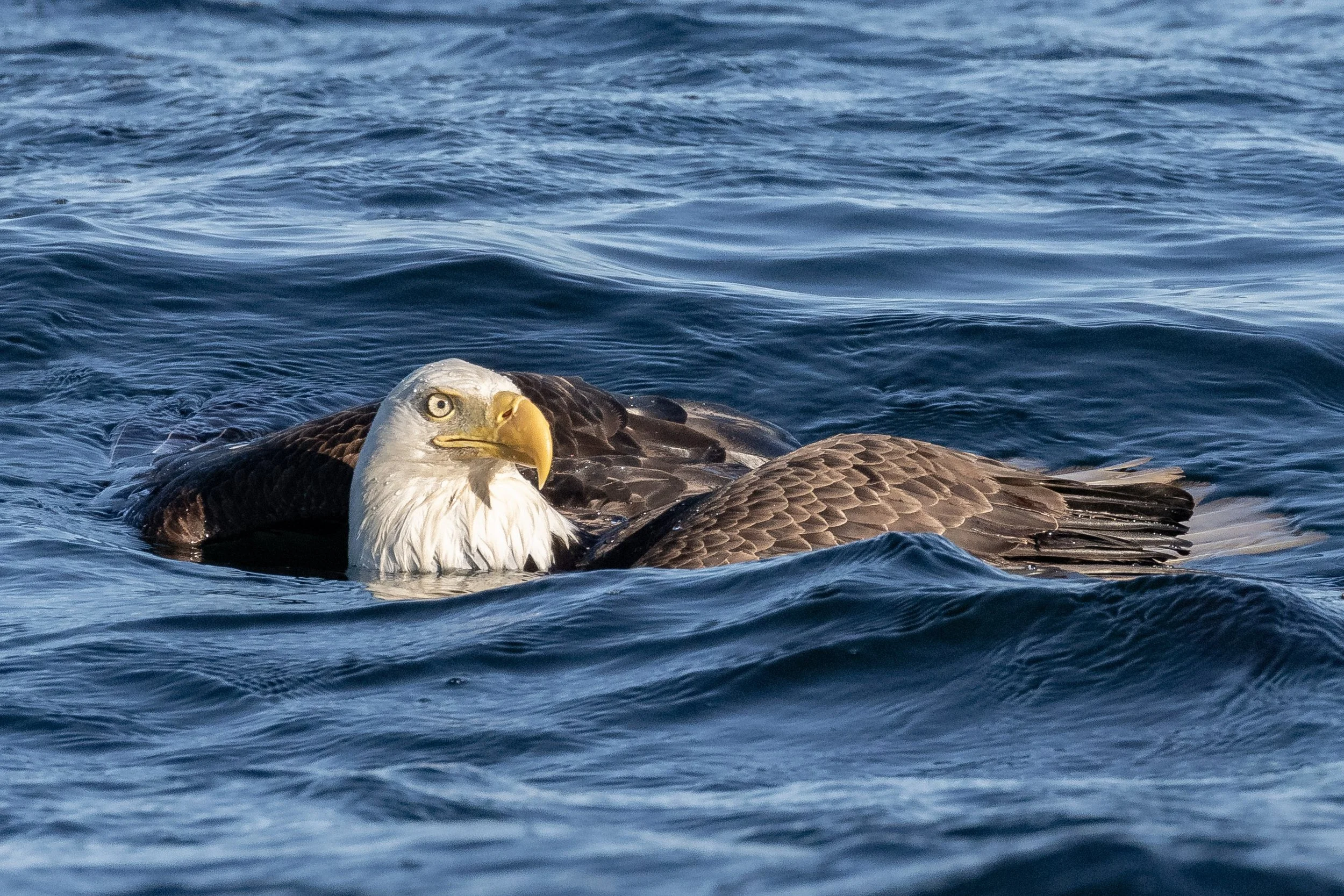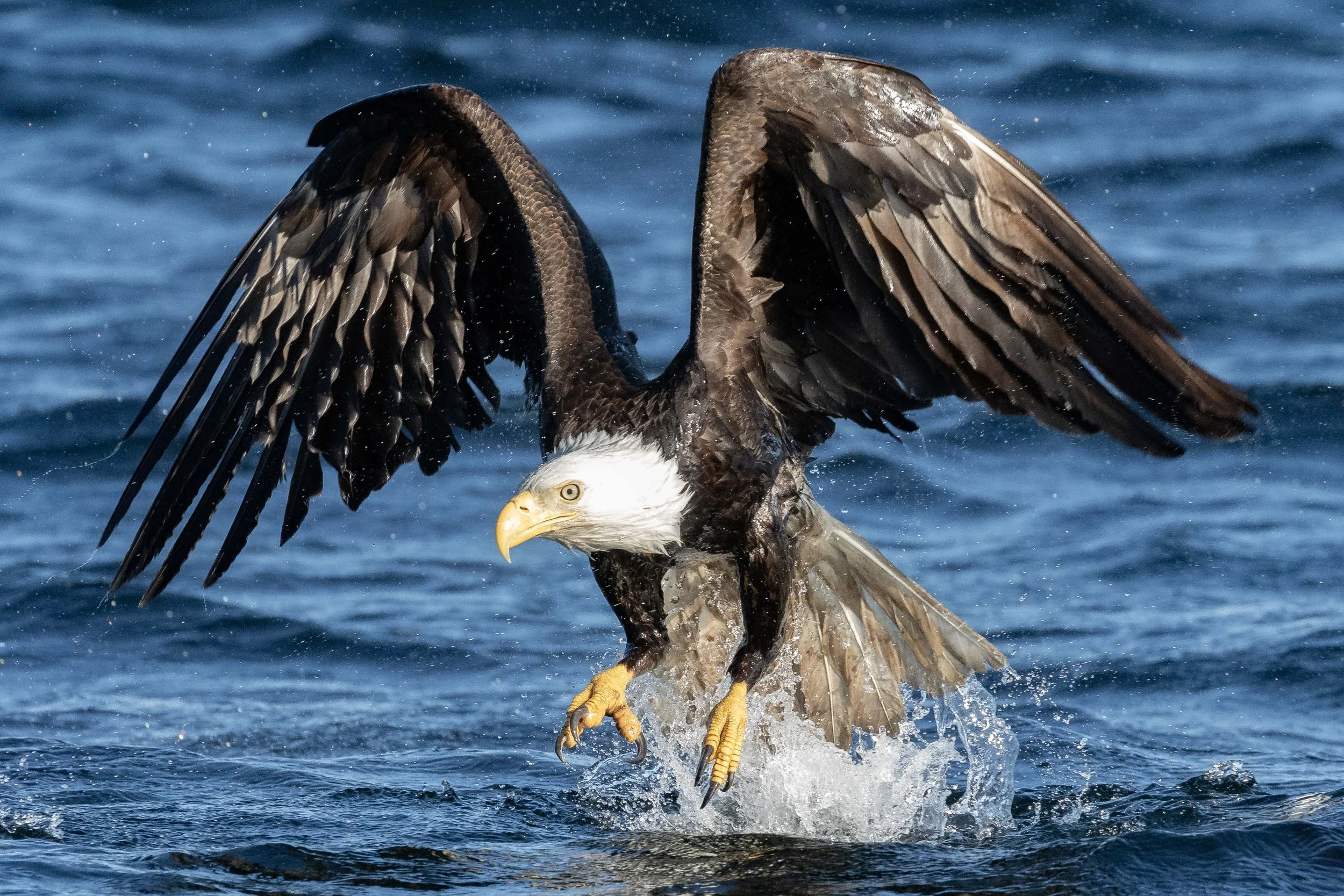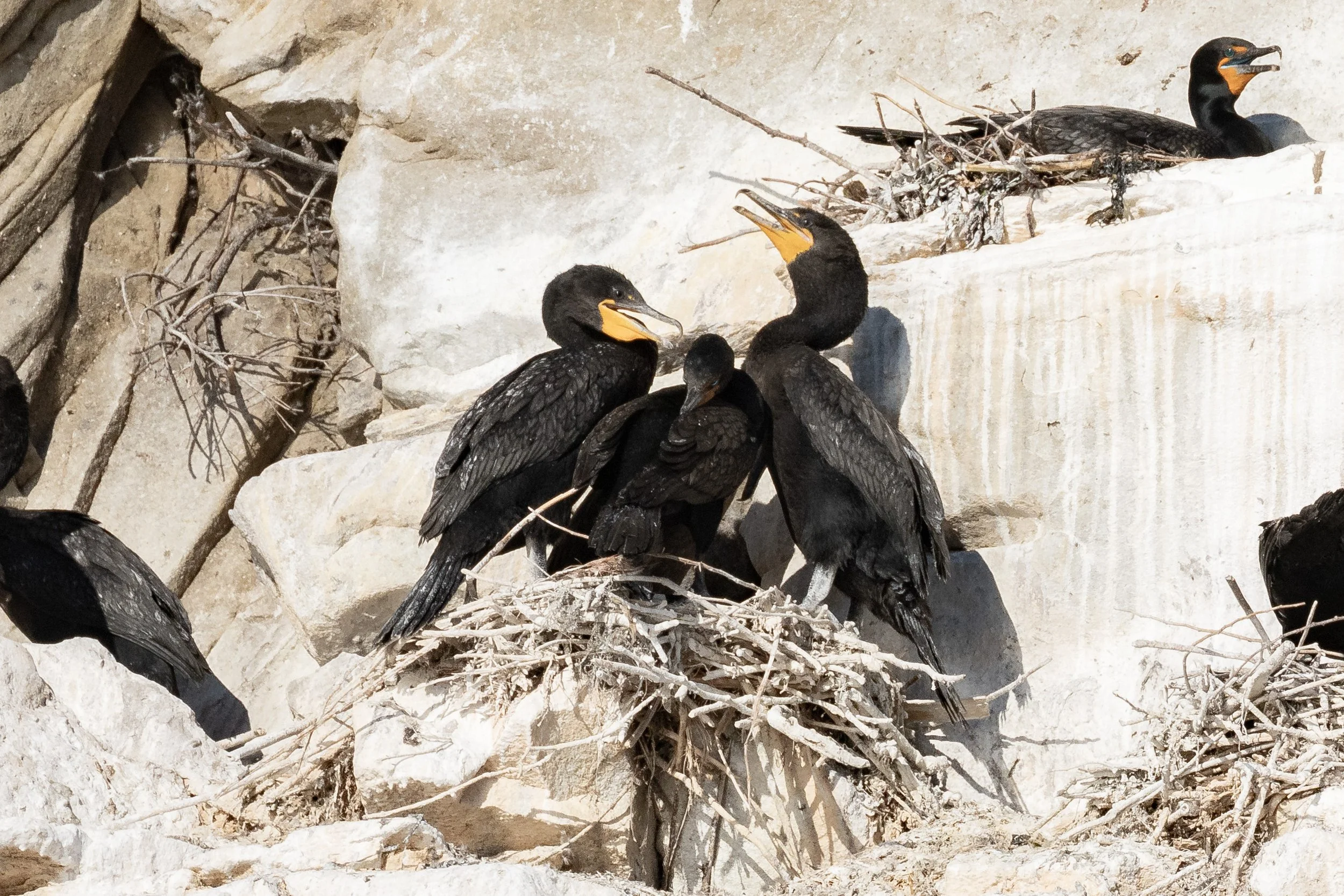July 3, 2024, 3:30 PM - Double whale species trip!
We were graced with another beautiful day as we set out in search of some whales. After some time on the water, we found the T124A2’s a company favourite and family we know very well. Elkugu is the matriarch of this small group and she travels with her 2 children Agafia and Litton. Being a well-known family doesn’t mean that they spend all their time in the Nanaimo area. Orca have vast ranges and with or Transient/Bigg’s killer whales they can be found anywhere from Alaska to California. This family recently showed us just how far-ranging they were when they were recorded in Telegraph Cove on a Sunday and then 2 days later on Tuesday were once again recorded but this time in Vancouver. This means that in less than 48 hours this family traveled over 340 km. This of course does not account for any of the additional movements for hunting and socializing! The T124As are the following whales:
T124A2 Elkugu ♀ (2001)
T124A2A Agafia ♂ (2013)
T124A2B Litton ♀ (2016)
After hanging out with Elkugu and her kids it was time to try and make it a double species day. We came across Beak (BCX1606) who is another well-known whale to us. Beak is the calf of perhaps the most iconic whale in the Salish Sea: “Big Mama”. It’s sad to think about but there was a time when seeing a humpback in the Salish Sea was unheard of. Humpbacks were heavily hunted in the whaling area and because of this, they were extirpated from the area. In 1967 the last whaling company on the West Coast shut its doors for good and by 1972 Canada had banned commercial whaling altogether. By 1986 the International Whaling Commission implemented a worldwide whaling ban (though a few countries still practice it). For a long time, we didn’t see humpbacks feeding in our backyard, but then in 1997, a single whale appeared. This was Big Mama! She has come back every year since and has currently brought back 7 calves in this time including the whale we saw today: Beak. She’s also now a grandmother and even a great-grandmother!
We are always excited to see Beak, but today Beak was exhibiting a behaviour called lunge feeding which was extra exciting. When humpbacks migrate here they do so to fill their bellies but most of the feeding in our area is done below the surface. It’s an absolute treat to see surface feeding when the whales open their gigantic mouths, scooping up prey and water in their rorquals (expanding throat). They then use their powerful tongues to push the water and food towards their baleen which lines the top of their mouth. The water sifts through and the food that remains is swallowed. Shockingly a humpback needs to eat anywhere between 3000-5000 pounds of food a day doing this!
Whales are always interesting but we were fortunate to see other species on our tour today as well. We visited Stinky Rock where our Stellar Sea lions were sunbathing. A particularly sleepy sea lion was dubbed Burnaby, named after an equally sleepy guest on board. We also got to witness a bald eagle in its attempt to catch a fish. The eagle misjudged slightly as the fish was too large to carry off and they had to abandon it to fly away. Luckily for our bald eagles, they are excellent swimmers so this wasn’t a problem. You can see photos from our adventure today below taken by onboard Marine Naturalist Hayleigh Hilbert.
We can ID our orca by looking at their dorsal fins, saddle patches and eye patches. This orca is Elkugu. Photo by Hayleigh Hilbert.
Litton coming up for a breath. Photo by Hayleigh Hilbert.
Litton is Elkugu’s youngest calf at 8 years old. Photo by Hayleigh Hilbert.
Beak lunge feeding at the surface. Photo by Hayleigh Hilbert.
We can ID our humpback by dorsal and fluke! Photo by Hayleigh Hilbert.
Beak about to go for a long dive. Photo by Hayleigh Hilbert.
The easiest way to ID beak is by looking for the lines in the middle of the ventral side of his fluke. Photo by Hayleigh Hilbert.
Flukes up. Photo by Hayleigh Hilbert.
Stellar sea lion checking out the boat. Photo by Hayleigh Hilbert.
Lazy day in the sun for this sea lion that was dubbed Burnaby, named after a sleeping child on the boat. Photo by Hayleigh Hilbert.
Can you see the size difference between the male and the female? Photo by Hayleigh Hilbert.
Did you know eagles can swim if they have to? In this case, the eagle tried to catch a fish that was too big and had to abandon it. Photo by Hayleigh Hilbert.
It takes a lot of power to lift wet feathers out of the water. Photo by Hayleigh Hilbert.
Photo by Hayleigh Hilbert.
Cormorants in their nest at the Gabriola Bluffs. Photo by Hayleigh Hilbert.

